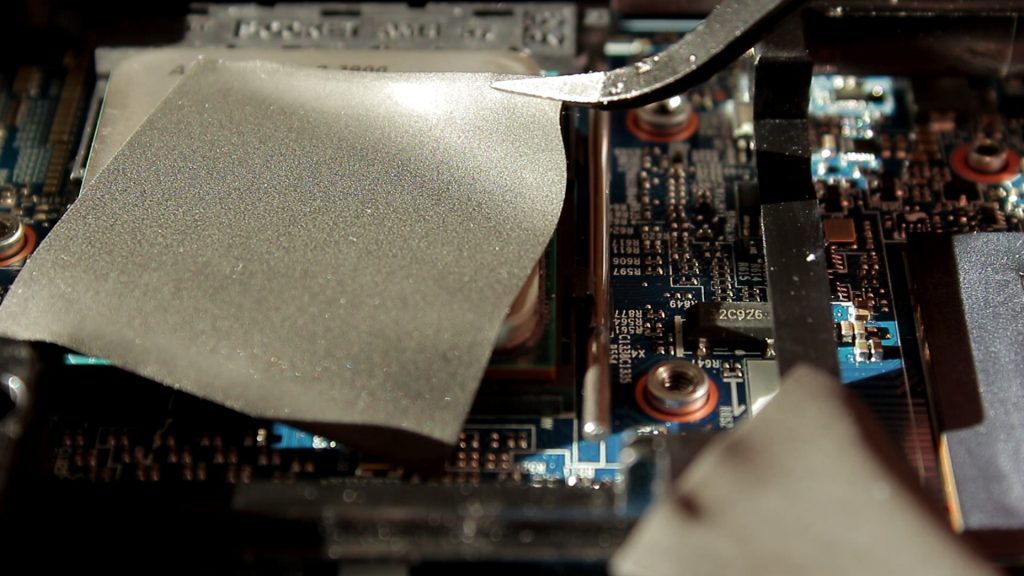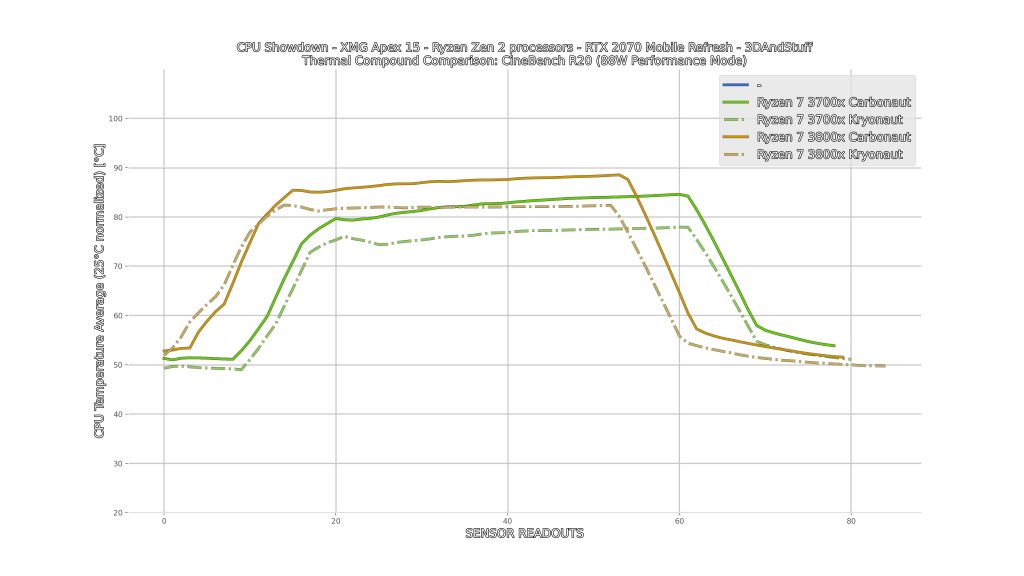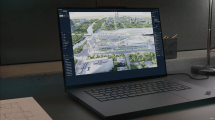Thermal paste, or not?
I ordered two Thermal Grizzly Carbonaut thermal pads to make the tests easier, cleaner and temperature measurements more reliable. I was not sure if thermal paste like the originally used Thermal Grizzly Kryonaut would introduce too much variance into the data, because it’s thermal performance can depend on the actual physical application style quite a lot. TG Carbonaut should provide more solid and well comparable data.

It should be noted, however, that the warranty may be void if the cooling system is improperly (dis)installed. So if in doubt, check with XMG support first!
But it definitely is not performing as well as thermal paste. I measured a difference between freshly applied Kryonaut and the Carbonaut pads of 4-7°C (7-12°F). But Carbonaut could still be the better choice for all who don’t want to do maintenance.
|
Thermal Conductive Paste |
Thermal Grizzly Carbonaut (Graphite Pad) |
|
Degenerates over time |
Does not degenera |
|
Up to 16.5W/mK |
Up to 62.5W/mK |
|
thinner |
thicker (0.2mm) |
|
Can fill in unevenness better |
Can fill in unevenness more difficult |
|
Not reusable |
Reusable |
Temperature Calibration
Another part of my test equipment was a k-type thermocouple thermometer (PeakTech 5115), which I used to log the temperatures before every benchmark run on the left and right of the notebook, in the middle of the short edges. Finally I calibrated the data to equalize the room temperature differences between different measurements. So the temperature plots you see in this video got calibrated data in respect to 25°C (77°F) room temperature, which is rather high, but represents the use in summer time quite well. Winter room temperatures would decrease the notebook’s temperature and increase the performance a little.
Noise measurements
And finally I used a consumer grade sound meter (Voltcraft SL-100) in a comparable way to Notebookcheck’s reviews. Originally I though they use 20cm (7.9in), but they use 15cm (5.9in) in reality. So my measurements are a bit off, I guess mine should be 1-1.5dBA less than theirs. AND very importantly I only measured those values with my bare eyes, a pencil and a paper. I had no way to record the measurements automatically on my computer, as I did with all the other data. Expect the noise measurements to be average-ish / peak-ish values. These are far away from being perfect.
Do you know what dBA measurement really mean for your personal perception? I think most people don’t. Let me try to explain it to you. Basically those value are scaled logarithmically. There is no scientific proof of what a human being senses to be “double as loud as before”, but in general most sources claim that a 10dBA difference makes a noise double or half as loud. So you should expect 60dBA to be double as loud as 50dBA, for example. Please not that the background noise of a very quiet room (f.e. bedroom at night) should be around 30dBA. So you get an idea how quiet the presented idle noise of up to 37dBA is. It’s not super quiet but quite quiet. 😉
- 1 - Introduction, Processors and Setup
- 2 - Thermal Compound or Thermal Pad? Noise and Temperatures
- 3 - Idle and Browser Streaming
- 4 - Cinebench R20
- 5 - PugetBench for Adobe Premiere Pro 2020 (version 1.4.3.2)
- 6 - Shadow of the Tomb Raider
- 7 - CS:GO
- 8 - Manual Overlocking
- 9 - Conlusion and Final Words


































Kommentieren